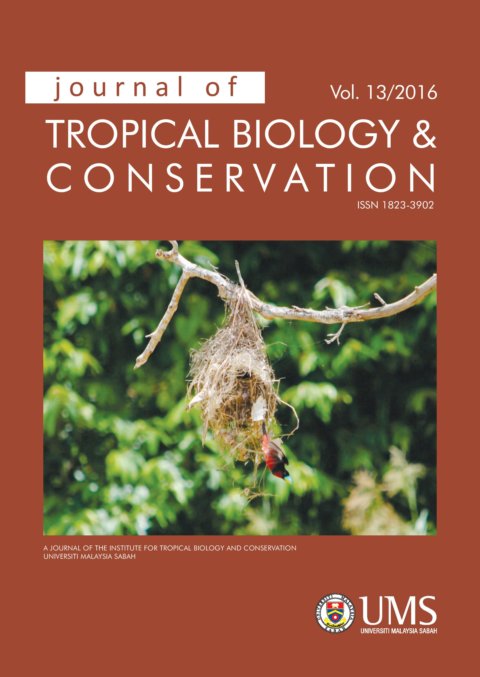Nest density of the Black-and-Red Broadbill (Cymbirhynchus macrorhyncos) along the Kinabatangan River, in Relation to Riverine Habitat Reduction
DOI:
https://doi.org/10.51200/jtbc.v13i.439Keywords:
Black-and-Red Broadbill, Cymbirhynchus macrorhyncos, Kinabatangan River, riverine habitat reductionAbstract
In Borneo, the forest type that supports the largest number of species, the tropical lowland rainforest, is decreasing rapidly. To estimate what is the general effect of this habitat degradation and loss on birds, this study looks at the easily visible Black-and-Red Broadbill nests that were surveyed along the Kinabatangan river in eastern Sabah, Malaysian Borneo, and answers the following questions: (i) what is the current density of the population of the Black-and-Red Broadbill between Batu Putih and Bilit, along the Kinabatangan river, (ii) is the abundance of nests correlated with the surrounding habitat type (forest or disturbed area), and (iii) do Black-and-Red Broadbills need and/or use the riparian zone at the riverbank for nesting sites. During this study, a 55.6 kilometre river transect was surveyed for 3 days, and nests that were found were recorded. This study found that Black-and-Red Broadbills nests were significantly more often located in areas with a higher proportion of forest habitat type (compared to disturbed habitat type). Furthermore, this study shows that Black-and-Red Broadbills need branches and sticks at the river’s edge to build their nest on, so they are profiting from the riparian zones along the river. Therefore we recommend enhancement of nesting opportunity by artificially providing above-water nesting sites along the river edge.Downloads
Published
2016-10-15
How to Cite
van Kolfschoten, L., Selveno, S., Stark, D. J., & Schilthuizen, M. (2016). Nest density of the Black-and-Red Broadbill (Cymbirhynchus macrorhyncos) along the Kinabatangan River, in Relation to Riverine Habitat Reduction. Journal of Tropical Biology & Conservation (JTBC), 13. https://doi.org/10.51200/jtbc.v13i.439
Issue
Section
Articles
License
BY: credit must be given to the creator.
NC: Only noncommercial uses of the work are permitted.
This journal provides open access to its content under CC BY-NC 4.0 on the principle that making research freely available to the public supports greater international collaboration and information exchange.












